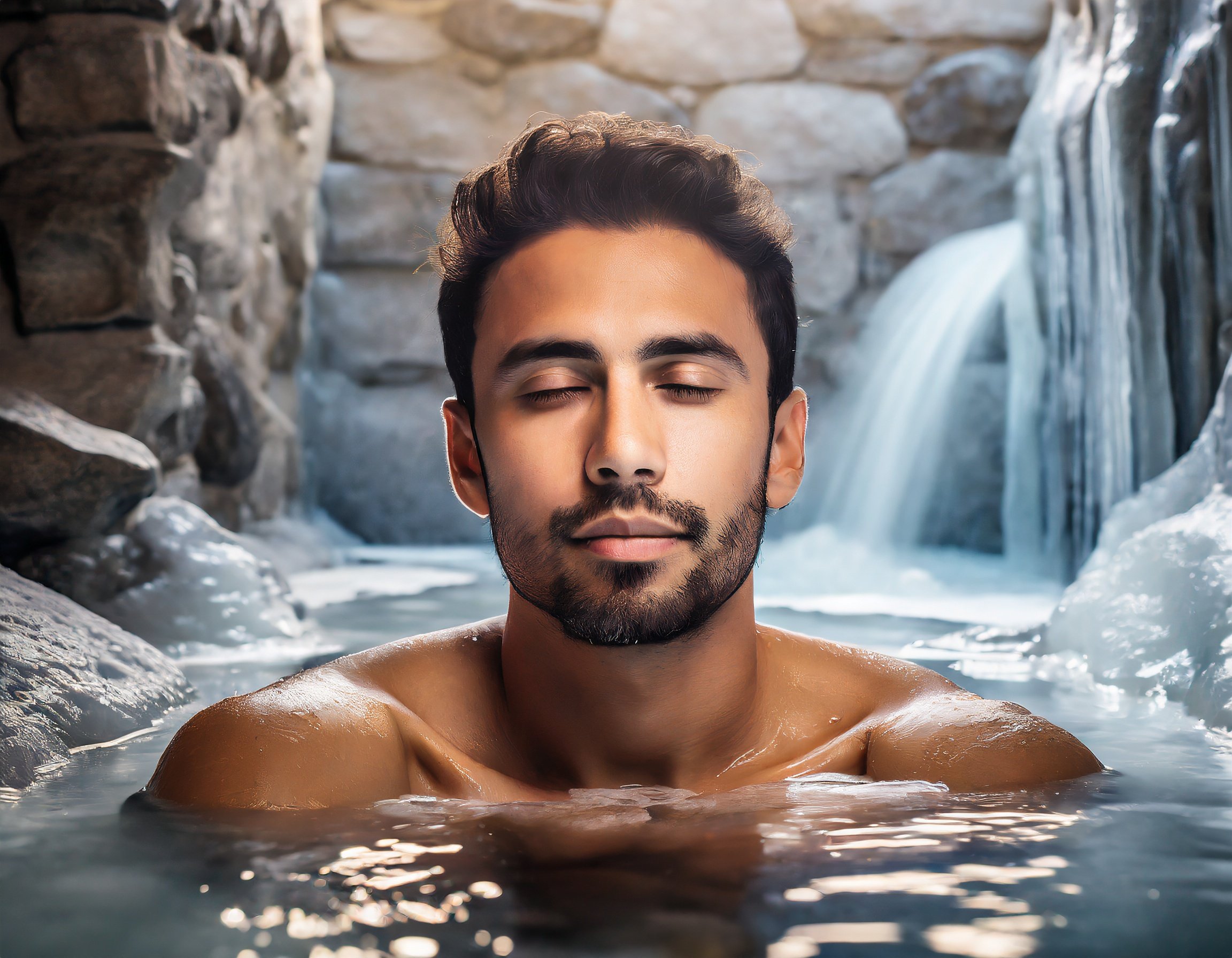Uncover the Unique Ice Bath Advantages for Health & Recovery
Diving into frigid lake waters, a chilly swimming pool, or simply a bathtub of cold water might not sound beneficial to a well-rounded wellness routine. Are there ice bath advantages or is it just nonsense? Ice baths, cold water immersion, and cold water therapy have recently become frequent practices for many fitness professionals, athletes, and health and wellness enthusiasts.
Ice baths have gained considerable traction with the rise of cryotherapy and other cold recovery techniques. This method, which involves immersing yourself in cold water for a specific time, is much more than a rising trend or a test of resilience against the cold. It goes beyond the shocking initial plunge and offers many notable health and recovery benefits.
Explore the numerous benefits of ice baths and cold water therapy, from reducing inflammation to improving athletic performance, muscle recovery, and even potentially improving circulation. Discover how a chilly dip could add to a wellness routine and significantly improve overall well-being.
History of Ice Baths
Ice baths are part of modern athletic practices but were once part of the holistic healing routines of our ancestors. Many warrior cultures adopted cold water baths or dipped into icy rivers to strengthen their body and minds, considering this practice an elixir for vitality. They noted a sense of refreshment and rejuvenation, believing that the intensity of the cold forged resilience.
Modern Muscle Recovery
Today, athletes and trainers worldwide practice cold water therapy through ice baths and cold plunges. It’s more than an endurance test but an integral part of the muscle recovery process. Cold water immersion therapy has potential benefits for active recovery by reducing inflammation, making it a recommended technique for muscle recovery by trainers and healthcare professionals.
Research Supports Ice Baths
Recent studies have shown the physical health benefits of ice baths and cold water immersion, and more research continues to be carried out. One study by the Journal of Athletic Training and another by the British Journal of Sports Medicine found a clear link between cold water therapy and reduced muscle soreness. Another study by Medical Hypotheses found that cold exposure can be a potential treatment for depression. The advantages of cold water immersion are both physical and mental.
Support by Sports and Fitness Circles
Post-workout ice baths have become almost non-negotiable in athletic arenas. With compelling findings, the sports and fitness communities recognize and embrace the many advantages of ice bath therapy. Top-performing athletes believe ice baths accelerate recovery, decrease muscle pain and stiffness, and improve overall performance. Fitness enthusiasts echo this sentiment, praising the advantages of this easy-to-practice recovery technique.

Physical Ice Bath Advantages
The physical benefits of ice baths are a compelling topic of discussion in the fitness world. Ice bath recovery techniques are an effective solution for increasing the speed of healing following high-intensity workouts. Evidence also supports that cold plunging can ease pain for those suffering from chronic conditions, such as arthritis.
Here are a few of the physical benefits of ice baths and how the cold water affects the body.
Inflammation
Inflammation is the body’s natural reaction to illness, injury, and invaders, such as viruses. It occurs when the body is healing affected areas. However, chronic inflammation or inflammation of healthy tissue can be harmful. Signs of inflammation include heat, pain, and swelling, all of which ice baths can help temper.
Cryotherapy, or cold therapy, lowers body temperature, nerve activity, pain, and swelling. So, whether a person suffers from chronic joint pain from arthritis or aching muscles from overuse, this method may effectively provide relief.
Delayed Onset Muscle Soreness (DOMS)
When exposed to strenuous and high-intensity exercise, muscle fibers tear and damage. The damage allows the body to rebuild the muscle, leading to overall muscle growth. However, this often causes muscle pain days after a workout, known as DOMS.
According to the two studies mentioned above, a cold bath after workouts, when used as a recovery method after athletic training, can reduce muscle soreness and help muscle recovery. Cold water reduces blood flow to the immersed areas of the body, allowing them to rest and recover. This process, known as vasoconstriction, is the principle behind muscle recovery using cold water therapy.
Improved Circulation
Vasoconstriction doesn’t just help treat DOMS; it also has overall long-term benefits. When entering a cold tub, the shock forces blood to rush to the core to protect vital organs and maintain body heat. After exiting the ice bath, the warmer environment causes the blood to rush back to the skin’s surface, leading to vasodilation. This back-and-forth process improves circulation throughout the body over time.
Stronger Immune System
Another benefit of vasoconstriction is its ability to stimulate an immune response and increase the production of white blood cells. These blood cells are the body’s primary defense against illness and disease. Not only are there more white blood cells created, but improved circulation allows them to move through the body efficiently.
Clearer Skin
The refreshing chill of an ice bath improves circulation, helps eliminate toxins, and rejuvenates skin cells. Better circulation also results in a flush of nutrients and oxygen to all body areas, including skin cells. What’s more, cold water immersion therapy can result in lower cortisol and stress. As a result, ice bath advantages extend to enhanced skin health.
Mental Ice Bath Advantages
Similar to the physical benefits of ice baths, the mental benefits of cold water immersion therapy are essential to consider. Many consider the initial shock of the cold water triggering the fight or flight response a benefit. Thanks to the body’s natural combination of endorphins, polar plungers claim the ice cold bath is a natural mood enhancer.
Here are a few of the mental benefits of ice baths and how cold therapy affects the mind.
Mood Enhancer & Anxiety reducer
Pushing past the physical ice baths also boosts psychological well-being. Some improvements in well-being are credited to the rush of adrenaline and endorphins, known as the body’s natural painkillers, that a cold dip provides. Ice baths can be a natural mood enhancer and anxiety reliever.
Mental resilience
Plunging into cold waters might be uncomfortable initially, but that discomfort builds mental resilience and grit over time. Overcoming this initial hurdle allows you to build mental toughness and resilience, especially when repeating this process. Incorporating ice baths to improve mental resilience is excellent for athletes and professionals in high-pressure environments.
Peace & Calm
The invigorating shock of a cold plunge awakens the senses and activates the production of mood-enhancing hormones. This shock leads to a heightened sense of well-being, increased optimism, and a positive outlook on life. For many, this mood boost is a natural antidote to the blues, making cold soaks a therapeutic ritual for both the body and the mind.

How to Take an Ice Bath
Ice baths have numerous health benefits, from increasing muscle recovery and improving circulation to enhancing mood and promoting calm. But how does someone take an ice bath? What is the ideal ice bath temperature or duration? What about cold shower benefits?
Preparation
Ice baths can be added to a health and wellness routine, but plunging right into a tub full of ice isn’t the best way to get started. Here are a few steps to make the most of cold water therapy.
- Start Slow—Before taking an ice bath, take short cold showers, extending the duration to a few minutes. This helps the body adjust to the cold. The primary ice bath advantages are the same as the cold shower benefits.
- Keep Essentials Nearby—Make sure to have dry towels and clothing ready after the bath.
- Temperature—Fill the tub with cold water and ice until the temperature is between 50 and 60 degrees Fahrenheit or 10 and 15 degrees Celsius. If taking an ice bath at home is difficult, many gyms, spas, and fitness clubs offer cold plunges.
- Time—Set a timer for your ideal amount of time. This will vary from person to person, but 10 – 15 minutes is the limit to reap the benefits of the cold without worrying about any risks.
Recommendations
- Listen to your body during this process. If you start feeling too uncomfortable or notice symptoms like numbness, tingling, or pain, you should get out of the tub immediately and begin warming up.
- Know the symptoms of hypothermia and basic first aid to treat it.
- Take an ice bath after workouts to capitalize on the benefits of the post-exercise ice bath.
- Pair the experience with calming music, a motivational podcast, or a pleasant view. These additions transform an ice bath into a routine for physical well-being and a holistic experience engaging mental wellness.
- Incorporate other healthy practices, including deep breathing exercises during the bath, which can help manage the initial shock of the cold and guide your body to relax. Warm-up exercises before the immersion can also be beneficial by ramping up the body’s temperature, optimizing the contrast between external cold and internal warmth.
Potential Risks
While ice baths are a potent tool for recovery, it’s essential to acknowledge the potential risks. The drop in body temperature can be stressful to the heart, potentially leading to cardiovascular strain in specific individuals. Prolonged exposure to cold water increases the risk of hypothermia. Always keep the duration short and monitor your body temperature. Where uncertainty exists, it’s crucial to consult a healthcare professional to confirm whether ice bathing is safe.
Who Should Avoid the Cold Plunge
Ice baths are generally safe but not recommended for everyone. Consulting with a medical professional before taking ice baths is essential. Those suffering from conditions like Raynaud’s disease, cardiovascular disease, or a compromised immune system should avoid them. The essence of ice bath advantages lies in their controlled and mindful implementation.

Uncovering the Benefits of Ice Baths
Ice baths have evolved from ancient healing practices to strategic modern fitness tools. From aiding in faster recovery after intense workouts to alleviating pain and chronic inflammation, the physical rewards are plentiful. The psychological ice bath advantages uplift the mood and reduce anxiety, fostering resilience against real-world discomfort and stressors.
As with all health practices, it’s essential to approach it mindfully, be aware of the potential risks, and listen to your body. Each individual’s experience with an ice bath will vary, but the possible health and recovery benefits may be worth the discomfort of diving into icy water.
Although getting started might seem chilling, with the practical steps and recommendations outlined above, the icy plunge can become a refreshing post-workout experience. Consider adding this practice to your health and wellness routine. Discover how you can reap ice bath advantages regularly. After all, sometimes the best things feel a bit uncomfortable at first.




